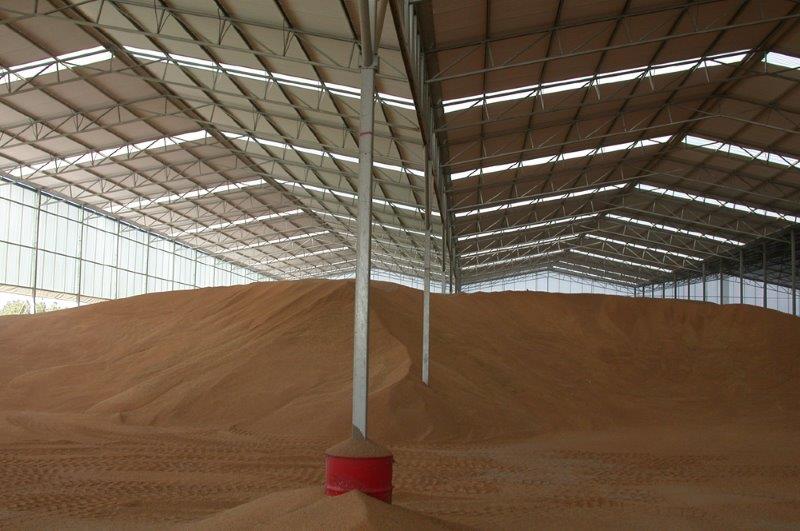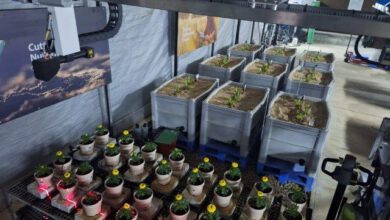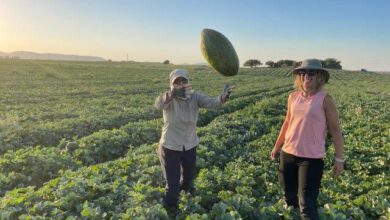Less loss and more eco-friendly: our challenges in grain storage
In the current global Covid-19 pandemic, supply of grain among countries has become less stable and less safe
Elazar Quinn, Anatoly Trostanetsky, Moshe Kostyukovsky and Daphna Gottlieb dafnag@volcani.agri.gov.il


department of food science, aro, the volcani center, israel
the storage of dry agricultural produce has been known for its importance to the existence and development of human society, for thousands of years. prolonged storing of cereal grains provides extended food security after harvest, and affords commercial advantage owing to marketing flexibility. in the current global covid-19 pandemic, supply of grain among countries has become less stable and less safe. as a result, many countries have begun to store produce and to attach more importance for food security. regardless of the present crisis, many countries’ policy is to store food stocks for times of emergency, in order to earn time and breathing space, until a long-term solution is found.
long-term storage increases risks of damage can occur by abiotic factors, such as extreme temperatures and high humidity; or by biotic factors, such as birds, rodents, insects and molds. the estimated grain loss during storage phase is up to 30% in developing countries, and about 2% in developed countries. therefore, reducing damage in stored grains is an important factor when dealing with global food crisis, and has a high economic and ecological implication.
stored product insects are a unique group of insects, which have adapted to dry conditions and a diet of grains, and are considered major pests of stored grain. these insects damage the stored commodities directly, by eating and contaminating the produce; as well as indirectly, by raising the temperature and humidity of the grain bulk, thus causing the development of molds and the decrease of produce quality. protecting the stored grain from these insects is achieved today by using integrated pest management methods. by this approach, high sanitation, routine inspection and pest control treatments, are maintained systemically during the whole storage period. currently, pest control in stored commodities is applied with chemicals, by fumigants, aerosols and residual pesticides. most of these pest control treatments are performed effectively. however, there is growing evidence of resistance to the insecticides used in grain storage. this, besides the growing consumer demand for wholesome, natural foods free of chemical additives, toxins, and pesticide residues, compel us to search for alternative substances and tactics which can be integrated in pest management.

the department of food science in the volcani center has been involved in grain storage research for decades. using our knowledge and experience, accumulated over the years, our research group, the grain storage and inspection unit together with daphna gottlieb’s laboratory, aim to replace the use of chemical insecticides for eco-friendly pest control methods. this is achieved by improving the use of current pesticides and seeking new, “green” and sustainable pest management strategies. this approach includes: (a) improving current methods, (b) developing sensitive technologies for early pest detection, and (c) the use of eco-friendly insecticides at infestation.
the use of protectants, such as synthetic pyrethroids and organophosphates is an important method for preventing development of stored product insects. protectants are applied in order to disinfest insects’ presence in the warehouses, prior to grain introduction. we have recently found that pyrethroid emulsion, sprayed on concrete surface, has partial efficiency only. therefore, we are now examining the effect of various surfaces characteristics on the protectants efficacy, and the effectiveness of various pyrethroids formulations.
once grains are introduced into the silos or warehouses, understanding the spatial and temporal patterns of insect pests is critical for informed pest management. we study long-term data collection to identify abiotic and biotic factors that may spot and highlight early stages of infestation.

several pest species are monitored by pheromone traps. these traps only provide a qualitative assessment of pest incidence. we study how timed releases of pheromone, during periods of peak insect receptiveness, could provide accurate measures of population levels. this in turn will allow optimization of alternate control and most importantly, will reduce insecticide treatment use. this approach of “timing the treatment” is one of the main techniques in the discipline of agro-chronobiology, which attempts to improve pest management practices by implementing pest control tactics at specific times of the day, when insects are more susceptible or receptive.
once infestation occurs, phosphine fumigation treatment is most commonly used. the search for a phosphine substitute, due to its high toxicity and global concern about insect resistance, has led to extensive research in essential oils from aromatic plants. our studies include a wide range of essential oils and their encapsulation into coarse and nano emulsions. we use interdisciplinary methods for assessing essential oils effectiveness. most essential oils in our study are derived from by-products of agricultural crops. thus, additional use of the product confers ecological and economic rentability.
integrating biological control in grain storages is both promising and challenging. although the idea of using biological control in stored products may seem ideal, several conditions limit its use. the main constraint is that it requires more information and careful timing compared to traditional insecticides. we are studying the potential use of both parasitoid wasps and bacteria (derived from grains and insects) as biological control agents. our current focus is in establishing the foundations for biological control program.
in conclusion, the unique knowledge and experience attained in the department of food science, alongside the cooperation with inspectors and storekeepers, has already yielded results: the loss of wheat grain stored in israel is less than 0.5%, which is a great achievement. new uprising challenges, such as reducing use of chemical pesticides requires efforts, resources and long-term research.




